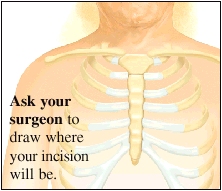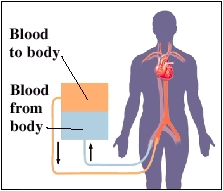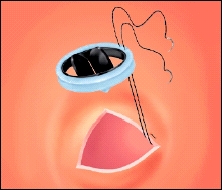Welcome to the medical library of Hartford Cardiology Group. The information shared below is provided to you as an educational and informational source only and is not intended to replace a medical examination or consultation, or medical advice given to you by a physician or medical professional.
If you have any questions or concerns regarding any condition or treatment, please contact Hartford Cardiology Group. To schedule an appointment please call (860-547-1489) or [email protected].
Minimally Invasive Valve Surgery
During heart valve surgery, one or more valves are repaired or replaced. Repair means that the valve is mended to help it work better. Replacement means your diseased valve is removed and a new valve is inserted in its place. Whether a valve will be repaired or replaced can only be decided once surgery has begun. Your surgeon will talk with you about his or her plans for surgery and any other procedures you may need. For minimally invasive bypass surgery, incisions made in your chest are often much smaller than those made for traditional bypass surgery.
Reaching Your Heart
To get to your heart, one or more incisions must be made in your chest. One of two types of incisions may be used. Which type your surgeon chooses depends on the location of the valve and the method of surgery used. Your surgeon will talk with you about which incision you will receive.
Stopping Your Heart
If your heart’s movements must be stopped during your valve surgery, your blood will be kept flowing by a heart-lung machine. This machine gives oxygen to your blood and pumps the blood back through your body. Your surgeon will connect your body to the machine through two tubes. One tube carries blood from your heart. The other tube returns blood to your arterial system. These tubes are inserted through blood vessels in your groin. Once the valve surgery is done, your heart and lungs take over again.
Repairing or Replacing the Valve
To reach the valve, an incision is made in your heart or aorta. If the valve can be mended, the needed repairs are done. If the valve must be replaced, part or all of the damaged valve and its supportive structures may be removed. The right-sized replacement valve is selected, positioned in the valve opening, and sewn firmly into place. The incision in your heart or aorta is closed. Your heart is then started so it beats on its own again.



